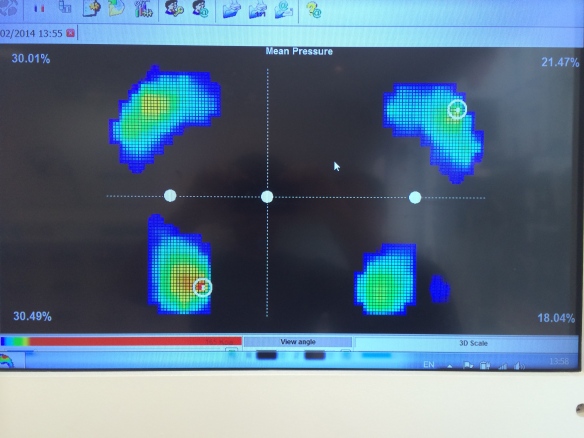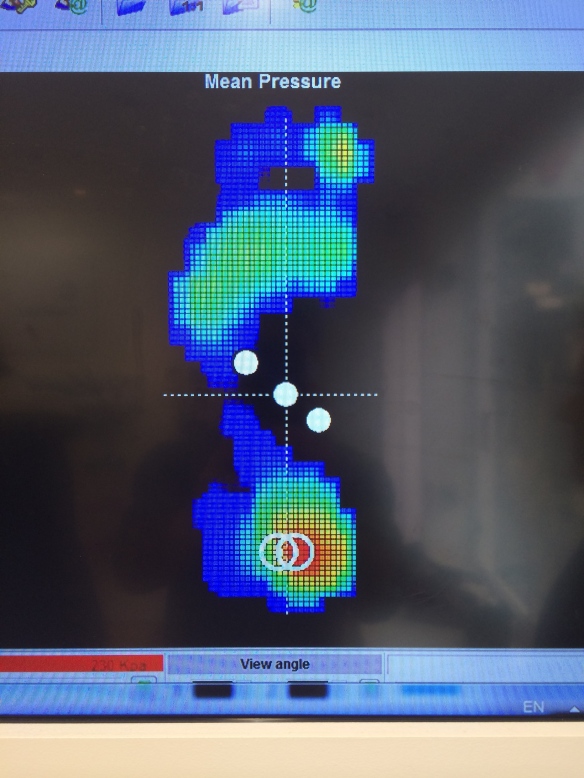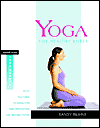I had tried to get into this race the past few years — the 8 miler or the 20, but never registered in time. The race typically fills up in 20- 30 minutes. Due to a registration snafu, I got into the 20 miler twice this year. I wasn’t sure I’d be ready to run 40, and thought 20 would be plenty. For a while I thought I might give one of the entries to my sister. But I also was looking for a reason to run the 40, and when she had plans come up, things fell into place. All of the old Triangle AR guys were in the 40, and I’ve been running pretty well, so I thought why not go for it. I could just use the ultra-shuffle to go that distance, right?
The trail and race is notoriously rugged. Here is an elevation profile:

I’ve run some on the northern section (mile 0-5 or so), though not a whole lot on the trail as we were practicing for a Rogaine, and I had backpacked from the southern end solo last year (miles 20 to 5 or so), so I knew what I was getting into. Lots of steep climbs, stream crossings (many with no bridges), some without stepping stones, etc.
The week prior Kelly and Reece had not been feeling well. I used Airbornne all week to try and stay healthy, but the night before the race I got a tickle in my throat, my nose started running, and I just didn’t have much energy. I went to bed at 8:30 but couldn’t really fall asleep until closer to 10:00. Luckily on race day I awoke not feeling very sick after all.
I woke up at 3:52 a.m., 3 minutes before my alarm was due to go off. I got up, made coffee, got dressed, forced down some oatmeal (I hate to eat that soon after waking), and I was out the door by 4:20 or so.
The 90 minute drive to Uhwarrie went by quickly as I jammed to some genius play-list, though I can’t for the life of me recall what song I seeded it with. None-the-less it was good music and kept me awake.
I arrived at the Church shuttle parking lot a few minutes after 6 a.m. This year, with the amount of rain there has been, the forrest service did not want racers parking at the start, which is really a trail head with very minimal parking anyway. I went in to the church to use the facilities, gathered up the gear I wanted, threw on some body glide in the appropriate placeds, got in the shuttle bus, and was at the start by 6:30.
After I quick check-in, I attached my race number to my shorts, made some final gear selections, and hung out. I ran into Charlie and met Sultan, whose blog I have followed for a while… Here is a link to his race report.
A couple minutes after 7:00 we headed to the road to listen to last minute instructions. Due to the amount of rain and high streams, some of the crossings on the southern section were deemed too dangerous and we were told that at mile 14 we would have to leave the trail and run a gravel road to the turn-around. This cut 6 miles of difficult trail out and put in 5 miles of relatively easy) road running in, thus shortening the 40 mile run to 38 and making it a bit easier. We were also told that depending on conditions they may elect to call the run at 20, which would have been a major disappointment!
Just before the start I decided I should ditch my top layer, a mid weight wool shirt, and just keep my even lighter weight wool base shirt on. As I ran the 30 meters back to my bag I heard “Get Set! Go!” Uh-oh, here I am starting the race in last place! No worries though in a 40 miler, in which my goal is to 1st finish, and then finish in under 10 hours. (The 10 hour goal was before the course modifications had been put in place.)
The first 50 meters or so is on the paved road up to a short double track trail that then climbs a few hundred feet, before you hit the single track. I passed some folks on the climb up before we hit the single track, and then settled into an easy pace, passing a few people here and there as the trail permitted. About 3 miles in I dashed past a pack of 6 or so to get some separation so I could do my own thing.
From mile 4 – 9 or so, I ran with Shannon and we talked about a bunch of things, which passed the time. She had a camera and took a few photos of me, which I’ve included in this post.

Crossing a stream.
Between 4 and 6 miles, snow started to fall and I began to worry about my choice of not wearing any kind of rain/snow shell. At the last minute I had stuffed it in my turn-around bag, so I had 15 miles or so to go until I could get it, and if the snow turned to rain, I probably would have chilled pretty quickly. But luckily, the snow stopped and it never rained. It was beautiful running in the woods with big flakes of snow falling all around.
Shannon had a pretty good fall right after the stream crossing shown here, at about mile 9, and told me to go on.

Just before the aid station at mile 14, the two leaders of the 20 mile run came flyng up behind me – they had started an hour later. I watched them run off and subsequently tripped and fell pretty hard on my right knee. Now two days later I don’t know if it is my old patella-femoral syndrome that I feel or the fall! I lean towards the fall since most of the pain is on the outside of the patella, not underneath, though the PFS is probably contributing a little.
Mile 14 is where we turned on to the 5 mile gravel road instead of continuing on the 6 miles of trail. Who knows how bad the trail was, but at the end of the day I trust the RD’s. They put on a great race in not so great conditions, had 8 aid stations well stocked with supplies and volunteers, etc. And while I would have loved to do the full trail, I still had a great time on the modified course. Here is the elevation data from the Garmin, which you can compare to the normal course elevation shown above. Miles 14 – 23 or so are the gravel road… As you can see pretty level compared to the rest of the course!

The thing with the road, for me, at least, was that I had planned on walking all the steep hills on the trail. The road, however, only had gradual inclines and declines. So I ran just about the whole 10 miles, which again, was not really in my race plan and not how I trained. Watching my average pace on the Garmin showed me go from about a 12:30 minute per mile average down to 11:40 by the turn around, so it was clearly a lot faster.
Only 2 or 3 more twenty milers passed me on the road up to their finish and my turn around. I was starting to get concerned that maybe the 40 milers were being pulled from the course at the turn, but finally I saw another 40 miler coming back. And then another, and another, and another… Good, the full race was on!
At the turn around I just put on new socks and grabbed my two extra fuel bottles. My fueling strategy for this run was to use two 20 oz bottles filled with perpetuem mixed very thickly with water for each half … One in my hand with water, the other in the pack with just powder, and then drink water at each aid station to dilute it. I ended up diluting the mix in the bottles by filling them with water at each station. This strategy worked well and I only had a tiny bit of solid food… About 3/4’s of a bananna at the turn-around; less than one pack of cliff shots, and one hammer gel single serving. The rest of the run was fueld by my liquid diet of Perpetuem and two or three swallows of Heed the aid stations had. (About 600 calories per bottle, 4 bottles total, and I never even drank from the 4th bottle!)
Shannon came in to the turn-around and said her leg was fine, and was back out on the road pretty quickly. After the turn, it was 5 miles back on the gravel road. I saw many more 20 and 40 milers heading towards the finish/turn, but I could not wait to be back on the trail. I was really getting sick of the roads!
Sometime around mile 25 or so, a lady in purple came up behind me and we ran together for a while. She said “that was impressive” when I crossed a stream on high, slipperly log. I looked back to see her in water up to her thighs, and thought my way was the better choice. 🙂 After the stream I told her to pass me and she was gone. She was running some really technical trail like she was a mountain goat — she made it look so easy! I on the other hand had to walk through some of this section.
From that point on there’s not much to report. I passed a couple runners, and at least one passed me. I was just marking time to the aid stations and the finish.
Coming down to the finish is a really rocky section… I was trying to push it to finish in under 8 hours, but it was tough to run here! I finally came down the last steep descent to finish in something like 7:58. Here I am coming to the line. I was trying to make sure my race number was showing so I could find the photo later! 

My goal for the original course was to #1 — finish, and if I finished, to break 10 hours. I think a 9 hour finish on the original course might have been possible, but pretty tight. We did a little under 38 miles, and about 9 – 10 of that was on roads. The roads were definitely easier and faster, though by how much is hard to say. So add 25-30 minutes for the extra distance, and another 25-30 minutes for the added difficulty, and 9 may have been in reach.
There’s always next year to see! However, I would really like to do the Mt Mitchell challenge which is another 40 mile run from the town of Black Mountain to the top of Mt. Mitchell and back. But it is a couple of weeks after Uhwarrie, and I can only handle one of these that close together!
Click here to see the Garmin GPS data…













